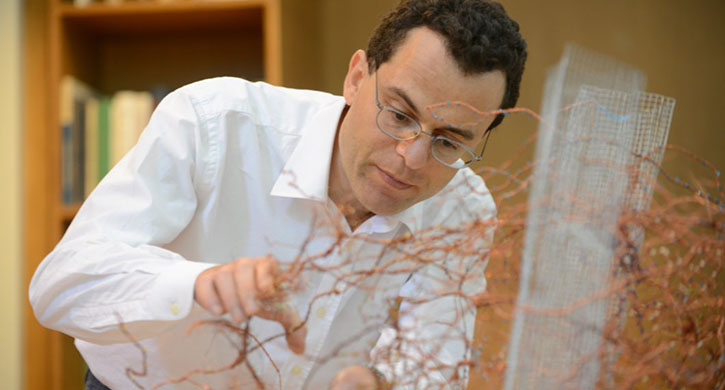
Giorgio Ascoli with sculpture at the Krasnow Institute.
Mason bioengineering professor and director of Mason’s Center for Neural Informatics, Structures, & Plasticity Giorgio Ascoli and his team have cleared up some confusion on the brain-mapping front to help other researchers in their work in cracking the neural code, which eventually could lead to advances in how brain disorders are treated. The new research appears in Trends in Neurosciences, a publication by Cell, which is a main competitor of Science and Nature.
At the heart of the controversy is “Peters’ rule,” based on the work of Alan Peters and his colleagues in the ‘70s. It’s all about connectivity between neurons, showing that neurons are more likely to link up with their neighbors rather than searching far afield (kinda like dating). Peters suggested that some neurons do not target specific connection partners; instead, their synapses are predictable simply because their outputs (axons) are adjacent to the inputs (dendrites) of their neighbors. If true, this substitute for synaptic information or Peters’ rule enticingly promises an accurate map of “potential connections” constructible from readily available data for neuronal positions and shapes. Using available synaptic data from Hippocampome.org, a knowledge base of neuron types in the rodent hippocampus created at the Krasnow Institute, Ascoli’s team showed that Peters’ rule correctly predicted connectivity between neuron types in 75 percent of cases. What’s more, when two classes of well-established and unique neuron types were taken out of the mix, the accuracy rate increased to more than 99 percent. The Mason research suggests that a more nuanced version of Peters’ rule, tailored to account for cell-type specific targeting, might create a path towards deriving a ‘draft’ connectivity map to help guide and interpret forthcoming, massive datasets of synaptic information.
